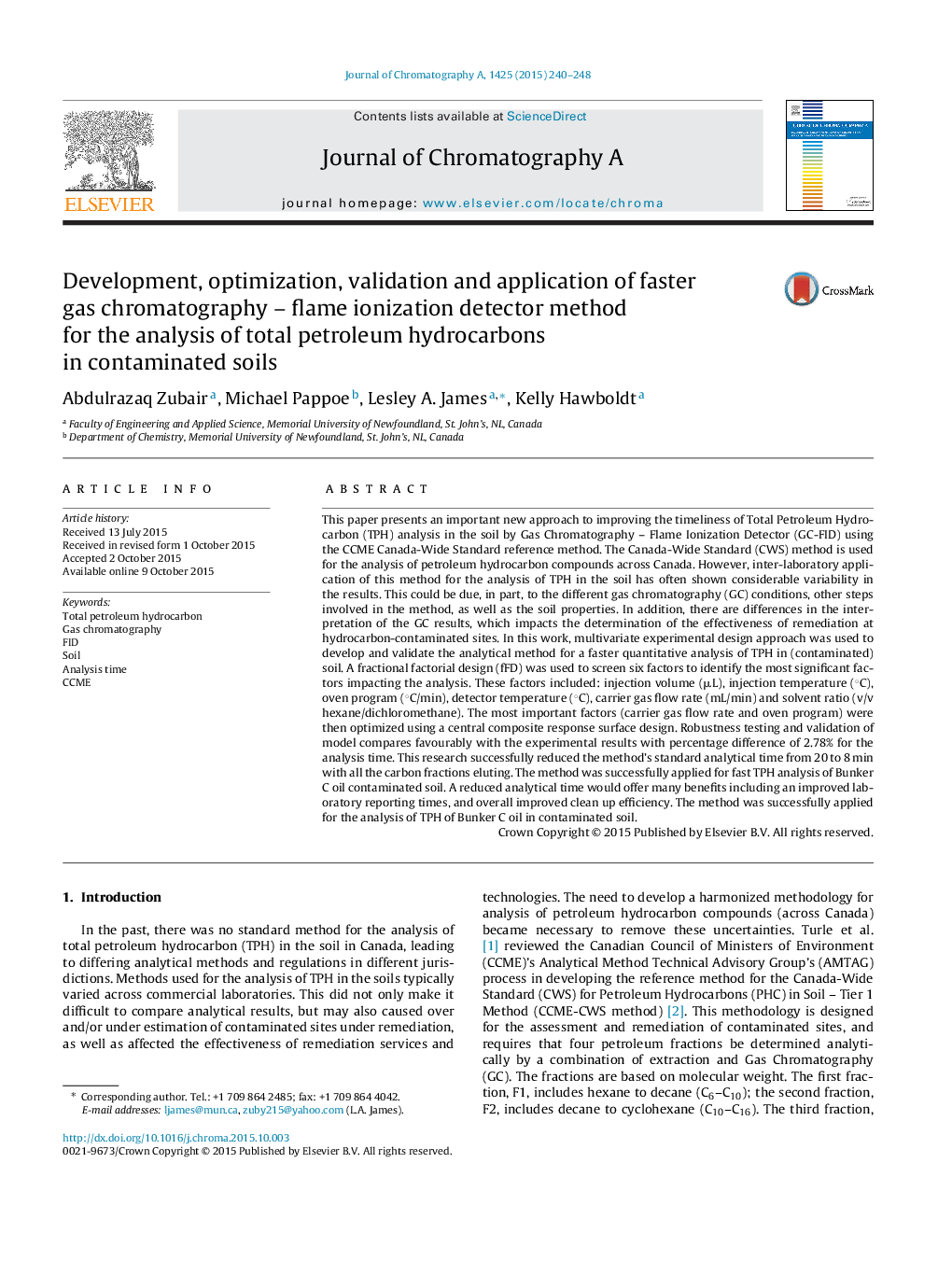| کد مقاله | کد نشریه | سال انتشار | مقاله انگلیسی | نسخه تمام متن |
|---|---|---|---|---|
| 7610853 | 1493501 | 2015 | 9 صفحه PDF | دانلود رایگان |
عنوان انگلیسی مقاله ISI
Development, optimization, validation and application of faster gas chromatography - flame ionization detector method for the analysis of total petroleum hydrocarbons in contaminated soils
ترجمه فارسی عنوان
توسعه، بهینه سازی، اعتبارسنجی و کاربرد کروماتوگرافی گاز سریع تر - روش آشکارساز یونیزاسیون شعله برای تجزیه و تحلیل کل هیدروکربن های نفتی در خاک های آلوده
دانلود مقاله + سفارش ترجمه
دانلود مقاله ISI انگلیسی
رایگان برای ایرانیان
کلمات کلیدی
موضوعات مرتبط
مهندسی و علوم پایه
شیمی
شیمی آنالیزی یا شیمی تجزیه
چکیده انگلیسی
This paper presents an important new approach to improving the timeliness of Total Petroleum Hydrocarbon (TPH) analysis in the soil by Gas Chromatography - Flame Ionization Detector (GC-FID) using the CCME Canada-Wide Standard reference method. The Canada-Wide Standard (CWS) method is used for the analysis of petroleum hydrocarbon compounds across Canada. However, inter-laboratory application of this method for the analysis of TPH in the soil has often shown considerable variability in the results. This could be due, in part, to the different gas chromatography (GC) conditions, other steps involved in the method, as well as the soil properties. In addition, there are differences in the interpretation of the GC results, which impacts the determination of the effectiveness of remediation at hydrocarbon-contaminated sites. In this work, multivariate experimental design approach was used to develop and validate the analytical method for a faster quantitative analysis of TPH in (contaminated) soil. A fractional factorial design (fFD) was used to screen six factors to identify the most significant factors impacting the analysis. These factors included: injection volume (μL), injection temperature (°C), oven program (°C/min), detector temperature (°C), carrier gas flow rate (mL/min) and solvent ratio (v/v hexane/dichloromethane). The most important factors (carrier gas flow rate and oven program) were then optimized using a central composite response surface design. Robustness testing and validation of model compares favourably with the experimental results with percentage difference of 2.78% for the analysis time. This research successfully reduced the method's standard analytical time from 20 to 8 min with all the carbon fractions eluting. The method was successfully applied for fast TPH analysis of Bunker C oil contaminated soil. A reduced analytical time would offer many benefits including an improved laboratory reporting times, and overall improved clean up efficiency. The method was successfully applied for the analysis of TPH of Bunker C oil in contaminated soil.
ناشر
Database: Elsevier - ScienceDirect (ساینس دایرکت)
Journal: Journal of Chromatography A - Volume 1425, 18 December 2015, Pages 240-248
Journal: Journal of Chromatography A - Volume 1425, 18 December 2015, Pages 240-248
نویسندگان
Abdulrazaq Zubair, Michael Pappoe, Lesley A. James, Kelly Hawboldt,
